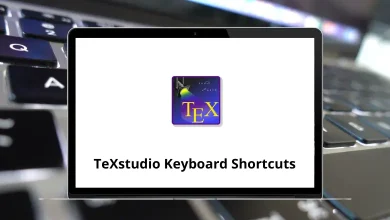10 Things You Must Know Before Developing a Mobile App
Creating a mobile app sounds exciting, right? You have an idea that could solve a problem, entertain users, or maybe even make you some serious money. But before you dive headfirst into development, there are a few critical things you need to know.
Table of Contents
- 1 1. Start with a Clear Problem Statement
- 2 2. Research the Market (and Your Competitors)
- 3 3. Decide Between Native, Web, or Hybrid App
- 4 4. Budget Wisely It’s More Expensive Than You Think
- 5 5. Design for the User, Not for Yourself
- 6 6. Build a Minimum Viable Product (MVP) First
- 7 7. Choose the Right Tech Stack
- 8 8. Test Early, Test Often
- 9 9. App Store Optimization (ASO) is Non-Negotiable
- 10 10. Plan for Maintenance and Updates
- 11 Bonus: Don’t Ignore Security
- 12 Common Mistakes First-Time App Developers Make
- 13 Tools That Can Help You During Development
- 14 How Long Does It Take to Develop a Mobile App?
- 15 Final Thoughts
- 16 FAQs About Mobile App Development
Whether you’re hiring a developer or doing it yourself, understanding the process saves you time, money, and countless headaches. So let’s break it down step-by-step, no jargon, no fluff.
1. Start with a Clear Problem Statement
Before writing a single line of code, ask yourself: What problem does my app solve?
Too many people jump into development without a clear purpose. An app that doesn’t solve a real problem or fulfill a genuine need will struggle to attract users.
Things to do:
- Write down your idea in one sentence.
- Identify your target audience who needs this app?
- Ask potential users for feedback before development.
Example: Think of WhatsApp its core problem was simple: “How can people send instant messages across platforms without paying SMS fees?” That clarity helped it dominate the market.
2. Research the Market (and Your Competitors)
Once you know the problem, dig deeper into the market. You’re not building in a vacuum chances are, someone has already made something similar.
Here’s what to research:
- Competitors: What’s working for them? What’s not?
- Gaps: What can you do better or differently?
- Trends: Are users moving toward voice apps, AI integration, or something else?
Pro tip: Check out reviews of similar apps on the App Store and Google Play. Real user complaints are your roadmap to improvement.
3. Decide Between Native, Web, or Hybrid App
This decision affects everything cost, performance, and scalability.
| Type | Description | Pros | Cons |
| Native App | Built for a specific OS (like Android or iOS). | Fast, stable, great UX. | Costly to develop for both platforms. |
| Web App | Runs in browsers, no installation needed. | Cheaper, faster updates. | Limited access to device features. |
| Hybrid App | Mix of both worlds using frameworks like Flutter or React Native. | One codebase, lower cost. | Slightly slower performance. |
If you plan to use frameworks like Android Studio (see our Android Studio Shortcuts), native is great. For startups, React Native or Flutter offer cost-effective hybrid solutions.
4. Budget Wisely It’s More Expensive Than You Think
Developing an app isn’t just about coding. There are hidden costs many first-time founders overlook.
Common expenses:
- Design & UI/UX: The visual appeal and usability of your app.
- Backend & APIs: Servers, databases, authentication, etc.
- Testing: Both manual and automated testing tools.
- Marketing & Launch: Ads, App Store Optimization (ASO), PR, etc.
- Maintenance: Regular updates, bug fixes, and feature improvements.
Rule of thumb: Whatever your initial estimate is, add 30–40% extra for unforeseen expenses. Trust me, it’ll come in handy.
5. Design for the User, Not for Yourself
The biggest mistake? Designing an app you like instead of what users need.
A great design is simple, intuitive, and guides users naturally. If your users have to “figure out” how to use your app, you’ve already lost them.
Design Tips:
- Use consistent colors and typography.
- Keep onboarding short and clear.
- Prioritize accessibility (fonts, color contrast, navigation).
You can learn from creative design tools like Adobe Illustrator or Figma check out our Figma Shortcuts to speed up your design workflow.
6. Build a Minimum Viable Product (MVP) First
An MVP is your app’s first functional version stripped down to the core features that prove your idea works.
Why MVPs are essential:
- Test your idea in the real world.
- Get early user feedback.
- Save time and money by avoiding unnecessary features.
Example: Instagram started as a photo-sharing app with filters no videos, no stories. They added more features only after validating user interest.
Quick MVP Steps:
- Identify your app’s main feature.
- Build only that.
- Test it with a small group.
- Iterate based on feedback.
7. Choose the Right Tech Stack
Your tech stack determines how stable, scalable, and fast your app will be.
Common choices:
- Frontend (User Interface): React Native, Flutter, Swift, Kotlin
- Backend (Server Side): Node.js, Firebase, Python Django
- Database: MySQL, MongoDB, Firestore
- Tools: GitHub, Docker, Android Studio, Xcode
If you’re developing on Android Studio or Xcode, make sure you know your shortcuts (they’ll save hours during debugging and UI design). You can check out our Xcode Shortcuts or Visual Studio Shortcuts for efficient coding sessions.
8. Test Early, Test Often
Don’t wait until the end to test. You’ll save yourself a world of pain.
Types of testing you need:
- Unit Testing: Checks individual components.
- Integration Testing: Ensures features work together.
- UI Testing: Focuses on layout and user flow.
- Beta Testing: Real users trying your app before launch.
Use emulators like Android Emulator (see Android Emulator Shortcuts) to simulate different devices and screen sizes.
Tip: Always test on multiple devices what looks perfect on an iPhone 17 may break on a Samsung Galaxy.
9. App Store Optimization (ASO) is Non-Negotiable
Building the app is half the job getting it discovered is the other half.
ASO helps your app rank higher in app stores, bringing more organic installs without paid ads.
Focus on:
- App Name & Keywords: Include relevant terms naturally.
- Icon & Screenshots: Make them attractive and informative.
- Description: Keep it clear, keyword-rich, and benefit-driven.
- Ratings & Reviews: Encourage happy users to rate your app.
Pro tip: Just like SEO for websites, ASO is ongoing. Update your metadata and visuals with every new version.
If you’re already optimizing websites, you’ll find this process familiar similar to improving search engine visibility for blogs on your WordPress site.
10. Plan for Maintenance and Updates
Launching your app isn’t the finish line it’s the starting point.
Why updates matter:
- OS updates can break existing functionality.
- New features keep users engaged.
- Security patches protect your data and reputation.
Plan a post-launch roadmap for bug fixes, feature rollouts, and performance improvements. Allocate time and budget for ongoing maintenance.
Example: Apps like Spotify and Instagram push updates almost every week. Not because they’re buggy but to keep evolving with user needs.
Bonus: Don’t Ignore Security
Mobile app security isn’t optional anymore. Users trust you with personal data and one breach can ruin your credibility.
Security Best Practices:
- Encrypt user data (especially passwords and transactions).
- Implement secure 2fa authentication (OAuth 2.0 or JWT).
- Use HTTPS everywhere.
- Avoid storing sensitive data locally.
If your app interacts with cloud services or online accounts, make sure API keys and tokens are well-protected.
Common Mistakes First-Time App Developers Make
To save you from painful lessons, here are some red flags to watch out for:
| Mistake | Why It’s Bad |
| Skipping user research | You might build something nobody wants. |
| Adding too many features early | Leads to a bloated, confusing app. |
| Ignoring analytics | You’ll have no clue what’s working. |
| Forgetting about marketing | Even great apps need visibility. |
| Poor onboarding | Users abandon apps that confuse them. |
Remember you’re not just developing an app; you’re creating a product experience.
Tools That Can Help You During Development
Here’s a short list of essential tools (and yes, many have shortcut guides you can find on our site):
- Android Studio – for Android development
- Xcode – for iOS development
- Figma – for UI/UX design
- GitHub – for version control
- Slack – for team communication
- Trello – for project management
How Long Does It Take to Develop a Mobile App?
It depends on complexity, but here’s a ballpark idea:
| App Type | Development Time |
| Simple Utility App | 2–3 months |
| Medium App (e.g., To-Do or News) | 4–6 months |
| Complex App (e.g., Marketplace, Social Network) | 9–12 months |
Don’t rush it quality apps need time for design, testing, and polishing.
Final Thoughts
Developing a mobile app isn’t easy but it’s not rocket science either. With clear goals, proper planning, and user-focused design, you can turn your idea into something real and valuable.
Just remember these key takeaways:
- Validate your idea early.
- Start small with an MVP.
- Keep testing and improving.
- Treat post-launch maintenance as part of the process.
If you’re already using creative tools like Adobe XD, Figma, or Illustrator, leverage your design experience to craft stunning interfaces users love.
Because at the end of the day your app’s success isn’t just about great code. It’s about how seamlessly it solves a user’s problem.
FAQs About Mobile App Development
How much does it cost to develop a mobile app?
Should I build for iOS or Android first?
How do I monetize my app?
Can I create an app without coding?
READ NEXT:





